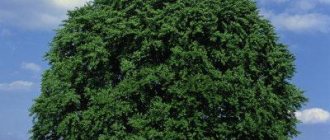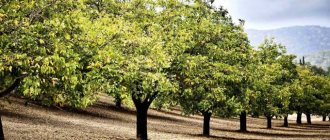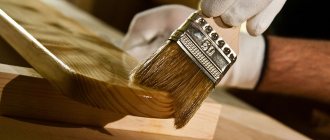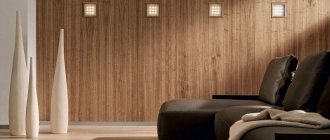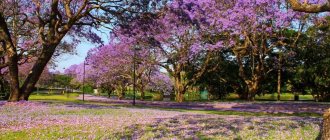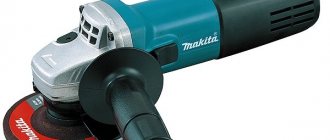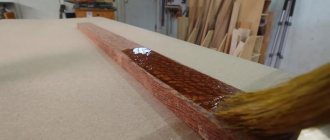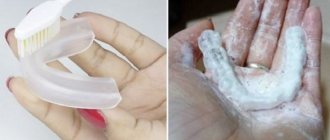Wood is one of the most used materials for building houses and making furniture. Over time, it began to be used even more, and processing methods improved. But before applying the varnish it must be processed. How to prime wood before painting? You can find out about this in this article.
Do you need a primer? Certainly. Priming wood before painting makes finishing simple and economical, and also extends the life of the material.
The tree is exposed to external influences. This may change the appearance or, over time, the material will begin to deteriorate, and it may also negatively affect human health.
The most common of these impacts are:
- Ambient humidity. A wooden structure can become deformed, rot, and mold will begin to appear on it. Cheap wood is especially susceptible to rotting.
- Sun rays. Because of them, the tree becomes dry and its strength may decrease.
- Insects can damage the structure of the tree.
To protect the material from such influences, wood is treated, varnished or painted. But first you need to prime.
Why do you need a primer?
All cracks and pores are filled with the composition. Thanks to this, mold and mildew will not appear in them. In addition, some compounds protect the tree from insects.
However, primer is not only intended for this. Special substances that impregnate the wood can also cope with this. And thanks to priming, the surface of the wood becomes strong and smooth, and not very permeable. Thanks to this, the paint lies evenly and the structure does not absorb it. This allows you to use it sparingly and reduce costs. In addition, the primer penetrates deep into the base of the wooden structure, making it very durable.
In addition to this, the finishing composition adheres better to the structure. It will last longer, not peel or crumble. Primer is more cost-effective than painting because it costs less.
Basic selection criteria, what to focus on when choosing soil
Before choosing a primer, it is important to consider the following points:
- Will the wood be painted in the future or will a clear varnish be applied?
- The work will need to be carried out indoors or outdoors. Several factors are at work here. For the interior, choose quick-drying, low-toxic and odorless mixtures. Then, as for the exterior, any are suitable, the main thing is that they protect the wood as much as possible from the effects of ultraviolet radiation, moisture and temperature changes;
- Also, you need to pay attention to the type of wood. Due to the fact that coniferous types of wood emit more resins, this effect should be minimized. Therefore, it is preferable to choose slag primers in this case.
Any primer is suitable for the exterior, the main thing is that it protects the wood as much as possible from the effects of ultraviolet radiation, moisture and temperature changes.
Wood that is intended for priming
If a wooden structure is located outdoors, it will be subject to temperature changes, attacks by pests, rot, and is also negatively affected by moist air.
List of things that should be primed first:
- window;
- entrance doors;
- fence;
- house siding;
- balcony, veranda or terrace.
If the wood is to be coated with paint or varnish, then a primer becomes mandatory.
Average cost of material (RUB)
| City | OPTIMIST D734 7 kg. | GNATURE 280 Wetterschutzö 0.75 l. | Colorex Traolja V 1 l. |
| Moscow | 759 | 1 450 | 489 |
| Kazan | 590 | 1 300 | 450 |
| Ufa | 590 | 1 250 | 470 |
| Nizhny Novgorod | 600 | 1 370 | 465 |
| Krasnodar | 650 | 1 400 | 475 |
Important! Work on priming and finishing wooden surfaces must be carried out in a protective respirator and in a ventilated area.
What exactly can you prime wood with?
There are several primer solutions for wood before painting.
Alkyd primer
Used if the tree has not been treated. With its help you can get a smooth and even surface, and it is suitable for any finishing work. If you choose a pigment primer, a dense matte film will appear on the surface of the wood. Dries in approximately 12-16 hours. It is not advisable to use it in residential areas due to the presence of organic solvents in it.
Polyurethane primer
Quite expensive. It is used if the wood will be coated with parquet varnish. It is based on polyurethane synthetic resins. It contains a fairly large amount of solvent, and there are no tonic additives.
Silicone acrylic primer
After its application, the moisture content of the wood becomes stable. It will not change when the ambient humidity fluctuates. Naturally, in order to ensure complete protection of the structure from moisture, an acrylic primer should be applied over the entire surface in several layers.
Shellac primer. It is necessary if it is necessary to smooth the surface or remove resin. Suitable for coniferous trees.
Emulsified primer
Can be used for any material, not just wood. It dries quickly (up to 4 hours), it can be diluted with water, it has no unpleasant odor, and it is also safe for humans. Due to so many advantages, this priming method is the most ideal and used.
Epoxy primer. Most often it is paint that is diluted with a solvent. Not a good priming option as there are different recipes and formulations.
Aerosol
It differs from other types of primer in the way it is applied. If in all previous compositions you need to use a roller and a brush to apply paint to the surface of the wood, then here the structure needs to be sprayed. There are advantages and disadvantages to this method. The advantages are that the primer will penetrate well into all crevices and hard-to-reach places, and it also dries quite quickly. The disadvantages are that the aerosol is consumed quite quickly and it is very difficult to determine how many layers of primer have been applied.
Antiseptic primer. It comes in liquid or powder form and is diluted in water. It is used in this way: first, the solution is diluted in a certain amount of water. Then a roller is taken and the primer is applied to the surface. It is necessary to apply several layers so that the solution gets into all the pores and cracks.
putty
There are a large number of compositions for wood putty. It all depends on the type of wood and what it will be covered with. If this is varnishing, then a mixture made with your own hands from PVA glue and wood sawdust is best suited. Homemade putty, after the glue dries, is painted the same color as the wood. It is quite durable and easy to sand.
If the wood is to be painted, then the purchased putty should be applied with a steel spatula in two layers. At the same time, it constantly needs to be dried and polished. Putty paint is quite elastic. If the air humidity is high and the temperature is low, then this type of putty protects the structure from cracks.
Drying oil and enamel
If you need a good penetrating primer, you can use oil paints or alkyd enamels. The best primer for wood that will be coated with oil paint is drying oil. It must be applied in two layers. The second layer is applied only after the first has dried. This may take about a day. It is necessary to dry the surface of the wood on all sides, this will protect the wood from various damages.
In order to protect the wood from moisture, you need to apply hot impregnation with drying oil. There are 2 ways to heat it:
- the drying oil is heated in a water bath and applied hot;
- You can first apply cold drying oil and then heat the surface using a hair dryer.
Alkyd enamel
The structure can be primed with glyphthalic primer GF 021. You must first dilute it using turpentine or white alcohol. In this case, the primer will be able to penetrate to a greater depth and, therefore, will better adhere to the base.
There are a lot of priming solutions. Choose the one that suits you.
By functional features
In addition to the composition, wood primers for interior work or for exterior processing of wooden coverings also differ in functional properties.
Anti-corrosion and antiseptic
Such solutions are used to protect wood from fungal growth or mold. They are often applied to structures located in difficult climatic conditions. If there is no finishing layer, the primer must be renewed after 3 years.
Deep penetration primer
Intended for the purpose of restoring old wooden structures that have a loose structure. With their help, the surface acquires an attractive appearance and receives the required degree of protection from moisture, fungus, mold or rot.
Primer with varnish
Varnishing compounds are characterized by a double effect: they act as a primer and also create a reliable varnish coating. Using such a tool, you can reduce the cost of purchasing finishing materials for a wooden floor.
Product with waterproofing properties
Designed to protect wood from moisture penetration. They are an indispensable impregnation when finishing the façade of a room.
Universal
They are distinguished by their universal purpose and can be used when processing different types of trees. Capable of penetrating deeply into fibers and creating adhesion between layers.
Priming process
Everything is simple here. Anyone can cope with this task. Products are always purchased along with instructions. There you can familiarize yourself with the conditions and methods of application. The most important thing is to prepare the surface of the wood.
The first step is to get rid of traces of paint, dust or stains. It is worth removing unnecessary screws and nails.
If the surface is not smooth enough, the material should be sanded with sandpaper or special tools. If water was used during cleaning, it must be dried.
Now you can take a brush or roller and start priming.
Common mistakes
The abundance of various, often mutually exclusive, recommendations on the Internet often leads to the fact that a master with little experience overestimates his strength or misinterprets the advice.
Mistakes when choosing soil and its use:
- an attempt to save money when purchasing primer often results in the fact that the wood is not properly protected from external influences and begins to deteriorate already in the first months of use, and the finishing coating quickly loses its aesthetics;
- independent introduction of antiseptic or other additives into the finished soil leads to the fact that the composition developed by the manufacturer loses its basic properties;
- Insufficiently thorough mechanical treatment of the surface before applying primer also negatively affects the durability of the coating and the aesthetics of its appearance.
In short, careful selection of soil and compliance with the instructions for use solve many problems.
Degreasing the wood surface
For this, turpentine or acetone is used. Wet a rag with the solution. If there is too much resin on the tree, then these places are filled with solvent. This procedure should be repeated 4 times.
In order to remove the old coating, universal removers are used. First, they are applied to the paint and covered with polyethylene for half an hour. Then, using a spatula, remove the softened coating.
Advantages of a primed ceiling
The quality of ceiling finishing depends on many factors: the skill of the finishers, the correctly selected finishing materials, and most importantly, the correct technology for the work. There are no small details in construction, and if even one technological operation is missed, or unreasonable savings are made on the building materials required by the technology, then you can forget about the quality and durability of the repairs performed.
The main evidence in favor of the advisability of priming during repairs is the clear and undeniable advantages of primed ceilings:
- Filling the porous surface of the base and binding the dust particles remaining after cleaning.
- Improving adhesion (adhesion) of finishing materials. A slight roughness of the treated surface has a positive effect on the connection of layers of putty, plaster, and paint.
- Creation of an antibacterial coating. If the primer contains antimicrobial components, then the applied primer will serve as a kind of shield against the penetration of fungal diseases, eliminating the appearance of mold and unpleasant corrosion phenomena.
- Increasing the fire resistance of the final finish. The use of special types of primers with fire retardant additives contributes to the non-flammability of the final finish.
- Reducing the actual consumption by 1.5 times of generally expensive ceiling paint, which leads to a cheaper budget for ceiling repairs. The thinnest transparent film of the base primer envelops the porous structure of the base and subsequent surface treatment will require much less putty or paint.
A primed ceiling increases such an important indicator as paint coverage, and after painting the surface will be perfectly flat and smooth.
Ceiling priming is an extremely important technological process that improves the technical and operational characteristics of the finishing coating.
Useful tips
Air humidity should be low. This will allow the material to dry faster. The air temperature should be from 5 to 30 degrees above zero. The higher it is, the faster the primer will dry. Therefore, you should do this in the morning or evening.
- The first coat of primer should be thin enough to fill all pores and cracks.
- If the wooden tiles are created by pressing chips, then 4 layers of primer should be applied.
- The quality of material impregnation depends on the number of primer layers.
- To apply a new layer, the old one must be completely dry.
- Soil doesn't have to be expensive.
- The primer must be water-repellent. This applies not only to the painting process. The shelf life of the tree itself and how precipitation will affect it will depend on this. It is worth noting that alkyd primer is not afraid of moisture.
- Time. A high-quality primer always dries quickly and is easy to apply.
Painting a wooden floor
Wood is a natural material that can quickly deteriorate without special protection. It follows from this that the main function of the floor covering is to protect it from rot, high humidity, mildew and mold. But this may not be enough. The decor of the house, including the flooring, should please the owners so that they enjoy spending time in it.
There are many reasons to use paint:
- the paint does not allow the wood to absorb moisture or dry out;
- painted floors are not exposed to fungus or mold, and this increases their service life;
- painted floors do not require additional care - they are often simply enough to be washed;
- paint protects the material from temperature fluctuations;
- Thanks to paint and varnish products, you can easily create a beautiful and unique pattern.
Reasons for using primers
Transparent primer for wood floors
Is a wood primer really necessary for varnish or is it still possible to do without using these products and thus save money?
It turns out that there are a number of objective reasons for using priming agents, among which we note:
- Ensuring better adhesion of the surface of lumber and paint coatings. Regardless of the type of surfaces being painted, paints and varnishes adhere much better to special primers. As a result, having previously prepared the surface, you can be sure that the paint will not peel off or bubble over time due to non-compliance with the operating temperature.
- Saving paint and varnish materials, since the price of primers is an order of magnitude lower than the cost of paints and varnishes.
In the photo, drying oil is a traditional solution for treating wood before painting.
Wood has a porous structure that actively absorbs applied paints and varnishes. By applying a primer, we close the pores, after which you can paint in one layer.
- High quality of painting, since the use of primers guarantees a leveling effect.
Special coating recommended for decoupage practice
The surface of lumber, even after mechanical processing, is not perfectly smooth. Primer compounds, when applied to the surface, fill small irregularities, as a result of which the prepared lumber looks more even and the paint adheres to it more evenly.
- Strengthening effect due to the penetration of primer compounds into the pores of wood. Penetrating into the porous structure, these solutions harden, as a result of which the porous structure of the wood ceases to be such and becomes almost monolithic to a depth of 1 cm from the surface.
So, we have decided that a primer for wood is necessary for exterior work and for interior finishing work. It remains to find out what products for preparing painted surfaces can be purchased in specialized stores.
Classification of primer coatings
Acrylic primer for decoupage on wood
In order to find out which primer is best for wood, you need to decide what requirements you place on these products and the surface they treat. The fact is that different primer compositions have different properties. Therefore, in order to choose a suitable product, we will consider the range presented on the market and tell you about the properties of this or that variety.
Primer is a wide range of compounds prepared using a natural or synthetic base. These products necessarily contain liquid or solid film-forming substances, such as, for example, wood drying oil, alkyd, formaldehyde and epoxy resins, urea, etc.
The range of primers is presented in colorless or colored varieties. Painted modifications are usually purchased for subsequent application of paints and varnishes, while colorless analogues are applied to the surface before applying varnish.
Depending on the composition and characteristics of the filler, the primer is applied in a layer whose thickness ranges from 0.01 to 0.1 mm (10-100 microns).
Doors ready for painting
According to their composition, primers are divided into the following categories:
- Shellac primers are designed to neutralize the effects of resins. The use of such products is especially justified when working with coniferous wood, where there are a large number of resin pockets.
Moisture-proof treatment of wooden lining
It is not recommended to paint lumber directly over resin, since the applied coating will subsequently become discolored in places.
Conclusion
Now we have a general idea of how and why we need to prepare lumber for subsequent painting. As a result, you can purchase one or another primer and prepare your wooden cottage or summer house for painting work.
More useful information can be found by watching the video in this article.
Applying varnish to wooden surfaces will increase the service life of furniture, parquet and other products. This preserves the texture of the wood and prevents discoloration and fading of the paint.
Preliminary stage: Preparing the wooden surface by tinting.
To give the wood the desired color and improve the texture, before applying varnish . Next, the surface is sanded with a grain of at least P100 (in accordance with the FEPA standard).
What kind of primer mixture is needed?
Having visited the construction market, slightly confused by the variety of goods offered there, a non-professional sometimes succumbs to the persuasion of sellers who advertise their product as universal, and may make a mistake with the purchase. To prevent this from happening, you need to decide before going to the market why and for what purpose the primer will be purchased. Its composition largely depends on this.
The purposes of applying primer can be the following:
- smoothing out uneven surfaces before applying varnish;
- restoration of old parquet or wooden floors;
- the desire to emphasize the texture of wood, to brighten its pattern;
- increase the shade of panels or parquet;
- protect the product from the risk of darkening;
- increase the resistance of parquet to wear;
- protect wood from unfavorable environmental conditions, fungi, rot - this most often applies to wooden products for outdoor use: gazebos, terraces.
Beginning of work
Nowadays, with a large availability of synthetic and polymer materials for construction, when decorating rooms, pieces of furniture and creating original furnishings, wood-like painting is still used, because such colors have a better effect on the human psyche and attitude than bright and unnatural artificial colors.
This natural material has a peculiar fibrous structure, so preparing wood for painting has its own characteristics. To begin with, the surface is treated with coarse sandpaper to eliminate large irregularities and various harmful organisms that may be located in the crevices between the fibers.
Sanding old wood will renew the top layer, making it light and clean.
You may also need to use coarse sandpaper if you are renewing an old, previously painted product. For example, in such a matter as painting a table that has been in use for a long time, when removing the old coating after sanding, it is recommended to use special wash-off compounds.
After coarse sanding comes the leveling process, which is done using a spatula and special automotive putty to create a flat surface. After the entire mass has dried, it should be treated with fine sandpaper to obtain a perfectly smooth surface without cracks, dents, bumps and all kinds of burrs.
After treatment with sandpaper and putty, it is necessary to remove all fatty inclusions from the area to be painted. They may prevent good adhesion of the paint material. Degreasing is done by wiping the surface with acetone, white spirit or other liquids.
In order to paint a wooden object with high quality, obtain an excellent final result of painting and maintain the durability of the coating, during the final surface treatment, a layer of regular or acrylic aerosol primer is applied to the product.
The primer gets into the smallest pores and crevices, thereby reducing its perception of moisture and improving the adhesion of the new coating
This is especially important when painting the surface white.
What should wood be protected from?
It is known that wood cannot withstand the influence of natural factors for long. And in order for the structure to last longer, it is necessary to provide protection from various types of damage. These include:
- Various types of natural precipitation act on the tree itself, destroying it and causing the wood to swell. All this leads to a reduction in the service life of structures;
- Exposure to ultraviolet radiation leads to loss of color of the applied coloring composition, as a result the wood dries out. Cracks appear;
- Biological effects, moisture causes mold and mildew to form on the surface, and various insects also like to inhabit the tree.
All these negative factors can be avoided by painting the surface with special means, but what is the best way to paint wood outdoors in order to get protection that will not peel off? This will be discussed below.
A tree cannot withstand the influence of natural factors for long.
Types of decorative coatings
How to paint a wooden porch to get a reliable coating? Paints and varnishes can have not only a decorative function, but also contain protective components
Before purchasing, it is important to study their properties, color, texture
Paints and varnishes can have not only a decorative function, but also contain protective components.
Paints
Colorful substances are produced in different ways, they can have hiding power, or, on the contrary, preserve the wood pattern, creating only a tint effect:
- So, outdoor wood preservative paint that creates a new color will be better suited to an old structure. It will help hide defects; I can use it to cover places where the finishing has peeled off;
- Option 2 is applicable only for the first painting of new structures.
Colorful substances are produced in different ways, they can have hiding power, or, on the contrary, preserve the wood pattern.
Varnishes and impregnations
Transparent varnishes will highlight the natural grain of the wood, creating a reliable protective film on the surface. But they are not suitable for the only means of covering stairs. They can be applied to steps only on top of the paint. A great option for painting outdoor railings.
If the dacha house itself is not painted or covered with facing material, then in order not to create a contrasting porch that will not look appropriate, you can resort to impregnation. Depending on the type, they give a glossy or matte finish. Preserving the natural grain of the wood, making dark fragments even darker.
Transparent varnishes will highlight the natural grain of the wood, creating a reliable protective film on the surface.
Comparative characteristics of dyes for external works
The choice of composition is influenced by cost, service life, and consumption. According to these criteria, the varnish has the highest cost, with the lowest consumption. Can last up to 8 years.
Enamels are cheaper than varnishes, about 2 times, but their consumption is much higher, with a service life of 6 years. Oil paints are even cheaper, consumption is approximately the same as enamels, and this coating will last 5-7 years. Acrylic products have the lowest price, average consumption, and the longest service life of up to ten years.
Acrylic products have the lowest price, average consumption, and the longest service life of up to ten years.
Which composition to choose
In order to make the right choice, you need to focus on the following criteria:
- Color, whether the property of hiding is necessary, or whether the texture needs to be preserved;
- Climate of the area, what maximum temperatures occur (lowest and highest);
- Humidity. General humidity, and frequency of precipitation.
In order to make the right choice, you need to focus on certain criteria.
Acrylic paint
The composition is simple, because it is made on the basis of water in which acrylic resin is dispersively dissolved - this is a coloring substance in the form of larger particles - pigments and fine insoluble powder that gives the composition color.
A distinctive feature of acrylic paint is the absence and speed of drying. smell and quick
Coloring powders can be of various origins:
- natural;
- organic;
- inorganic.
Pigments and larger particles act as fillers and are added to the composition to improve its binding properties during drying, strengthen the ink coating film and increase adhesion.
With the development of technology and the emergence of new substances, these products include various additives that act as auxiliary elements in enhancing certain qualities. But the main advantages of the main composition (durability, environmental friendliness and quick drying) remain unchanged.

